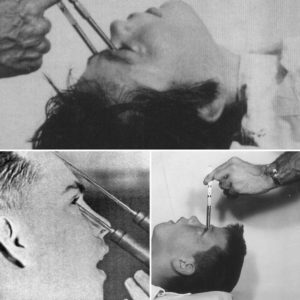History of lobotomies
On 12 November 1935, a Portuguese neurologist named Antonio Egas Moniz became the first individual to perform what would later be known as a lobotomy.
Moniz’s early experiments involved drilling holes into patients’ skulls & pouring alcohol into the frontal cortex to sever nerves; and coring out regions of the brain with hollow needles. Moniz’s lobotomy quickly became a popular treatment for various mental conditions.
It put an end to the therapeutic nihilism that dominated the psychiatric profession in the Victorian era. Suddenly, doctors believed they could “cure” the previous incurable. Within a decade, Moniz was awarded a Nobel Prize for his role in developing it.
During this time, Moniz’s procedure was adopted (and adapted) by the American neuropsychiatrist Walter Freeman, who performed the first lobotomy in the United States in 1936. Freeman soon won acclaim for his technique.
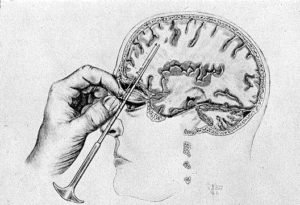
Later, Freeman created the transorbital lobotomy in which a pick-like instrument was forced thru the back of the eye socket to pierce the thin bone that separates it from the frontal lobes. The “ice-pick” lobotomy could be performed in under 10 minutes without anesthetic.
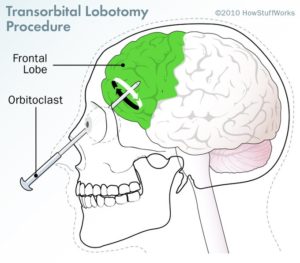
Freeman took to the roads with his ice-pick & hammer, touring hospitals and mental institutions around the country. He performed ice-pick lobotomies for all kinds of conditions, including headaches.
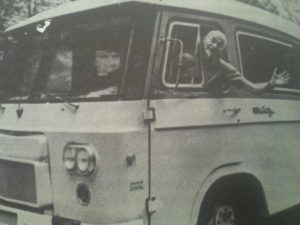
Eventually, he began performing the operation in his van—which people later called “the lobotomobile.” At one point, he undertook 25 lobotomies in a single day. Many of his patients never recovered, including Rosemary Kennedy, sister to JFK.
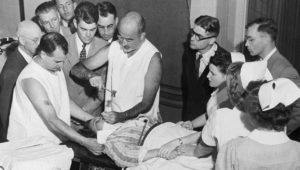
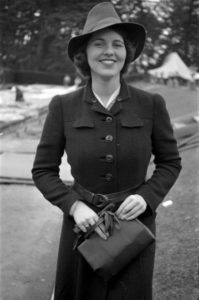
Rosemary was described by members of her family as a rebellious child who was prone to violent mood swings while growing up. In November 1941, Rosemary’s father took her to see Freeman, who performed the lobotomy right then and there, without her mother’s knowledge.
It soon became clear that something had gone terribly wrong. Rosemary could no longer speak, and her mental capacity was equivalent to that of a toddler.
Her father institutionalized her, saying his daughter was mentally retarded rather than admitting her condition was due to a failed brain operation. It was only after his death decades later that the truth behind her condition was revealed. This is her, later in life.

Over the course of four decades, Freeman performed nearly 3,500 lobotomies despite the fact that he had no surgical training. He eventually retired the lobotomobile and opened a private practice in California. Contrary to popular belief, he never lost his license.
